Architects: Want to have your project featured? Showcase your work through Architizer and sign up for our inspirational newsletters.
Glass blocks are making their mark in contemporary architecture, proving they’re more than just functional. Their ability to filter natural light, improve insulation and add texture has made them a go-to material for creating visually striking and efficient designs.
By softening boundaries and framing light and shadow, architects are rethinking conventional approaches to space and materiality. Integrated into homes, public spaces and cultural landmarks, these projects highlight how glass blocks can shape environments in thoughtful and unexpected ways. From the Arctic landscapes of Greenland to bustling Bangkok, explore seven projects that redefine glass blocks, transforming them into architectural highlights.
Common Sky
By Studio Other Spaces, Buffalo, New York
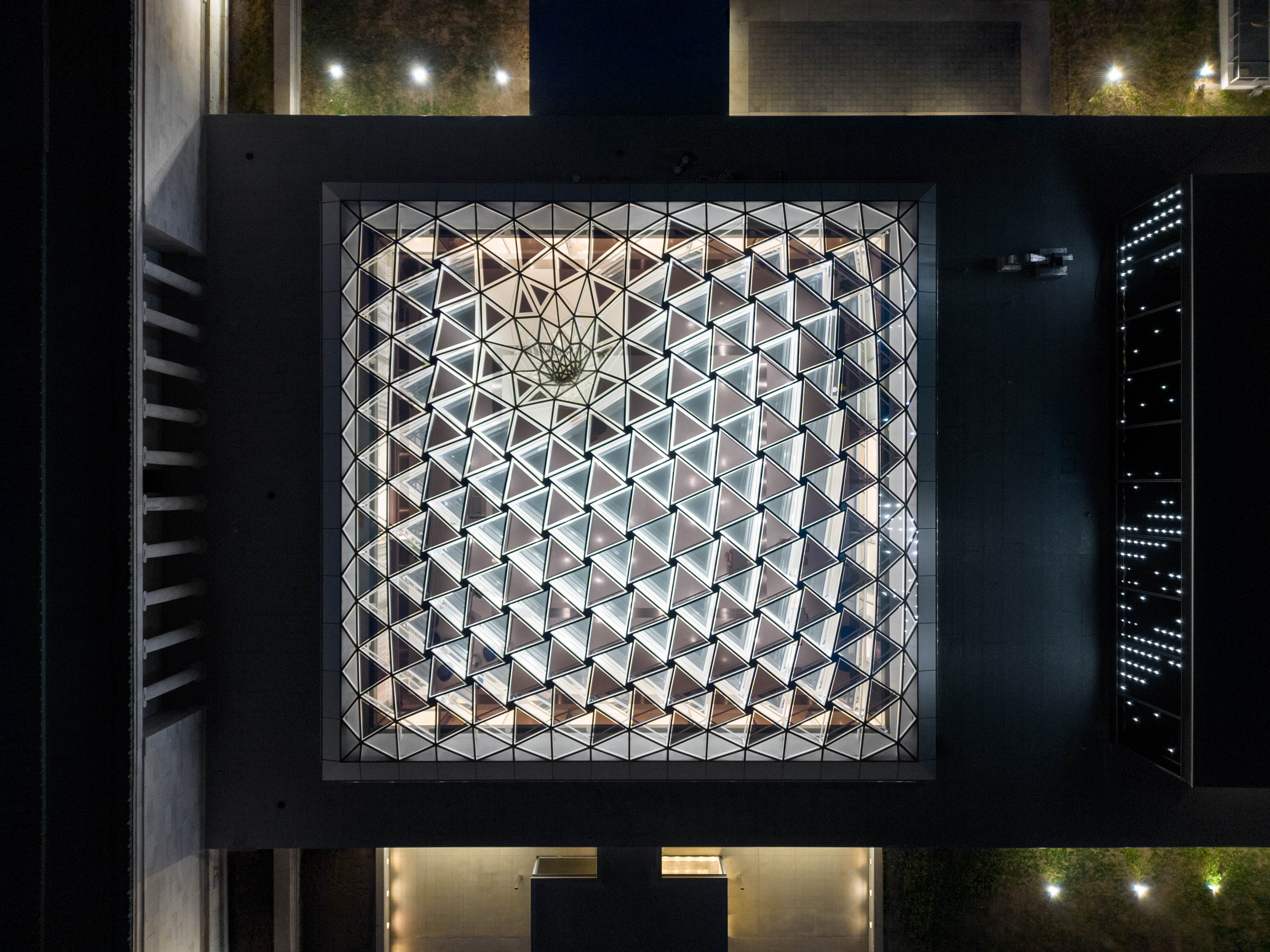 This project transforms a museum courtyard into a public gathering space under a sculptural glass and mirror canopy. Designed to be free and open to everyone, it creates a space for reflection, interaction and connection with nature. Visitors experience the changing sky, light and seasons through the structure, emphasizing inclusivity and environmental awareness.
This project transforms a museum courtyard into a public gathering space under a sculptural glass and mirror canopy. Designed to be free and open to everyone, it creates a space for reflection, interaction and connection with nature. Visitors experience the changing sky, light and seasons through the structure, emphasizing inclusivity and environmental awareness.
The canopy uses alternating transparent glass and mirror panels. The glass invites natural light into the courtyard, while mirrors reflect and refract the surroundings, creating shifting perspectives. The patterns transition from triangles at the edges to hexagons at the center, balancing openness with shading to manage heat and light. A single column grounds the structure, drawing in elements like rain and sunlight while minimizing the need for additional support. This thoughtful use of materials turns the canopy into an architectural feature that integrates nature and the built environment.
Refraction House
By RAD+ar ( Research Artistic Design + architecture), Jakarta, Indonesia
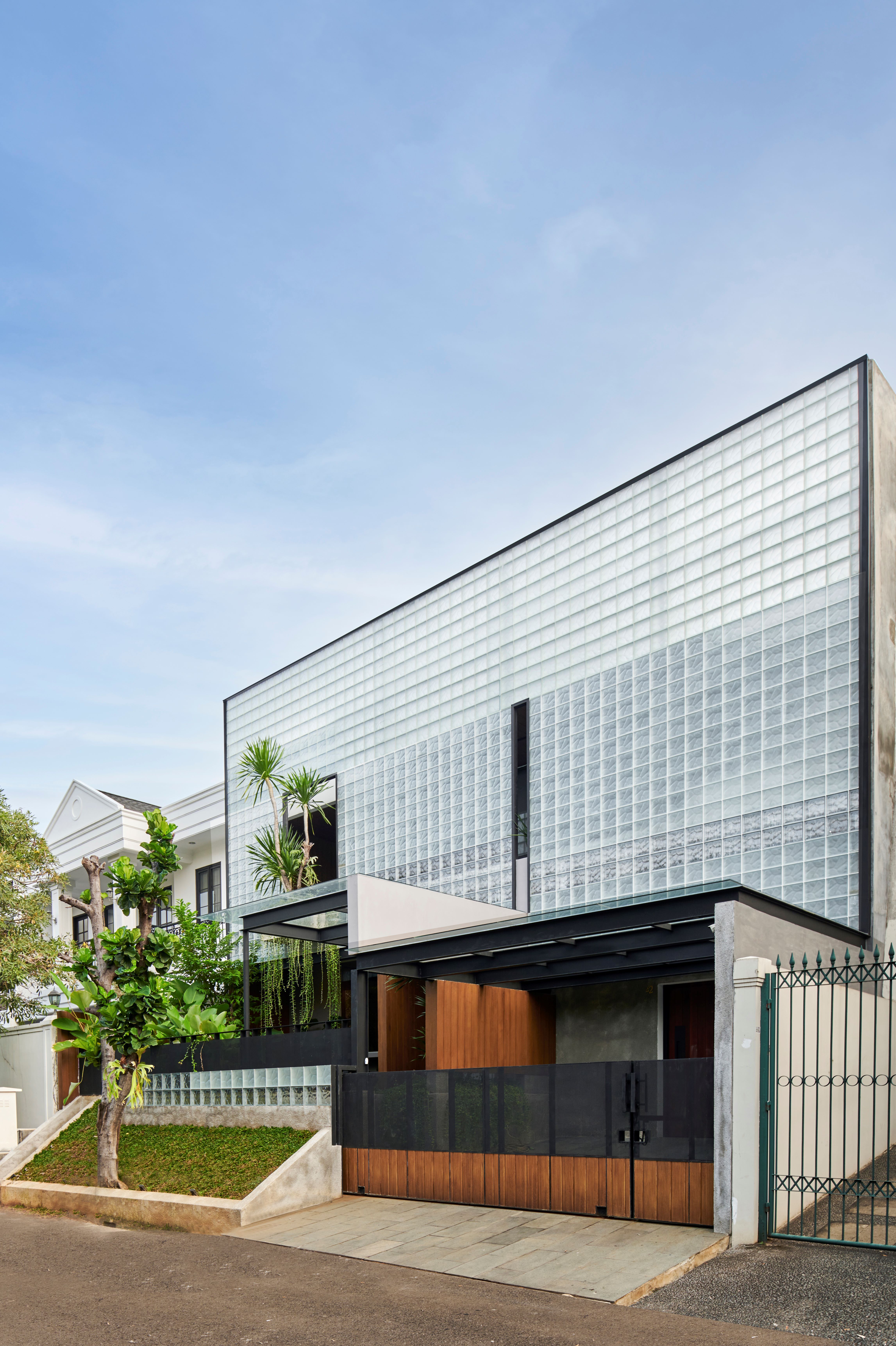
 Refraction House reimagines an east-west-facing tropical home to optimize natural light and reduce heat gain in challenging climatic conditions. Designed for a modern family, the house explores alternatives to traditional walls, transforming barriers into functional design elements that promote illumination and airflow. Glass blocks replace solid walls, refracting daylight deep into the home and ensuring consistent lighting levels without increasing heat.
Refraction House reimagines an east-west-facing tropical home to optimize natural light and reduce heat gain in challenging climatic conditions. Designed for a modern family, the house explores alternatives to traditional walls, transforming barriers into functional design elements that promote illumination and airflow. Glass blocks replace solid walls, refracting daylight deep into the home and ensuring consistent lighting levels without increasing heat.
To manage the intense tropical sun, front and back terraces are enclosed with open-air balconies that dissipate heat vertically. These interventions allow the home to remain bright while reducing thermal discomfort. Small internal gardens punctuate the design, creating green pockets that complement the glass blocks without obstructing light. This flexible approach preserves much of the original structure while fostering adaptability for future family needs.
The Glass Fortress
By Archismith, Bangkok, Thailand

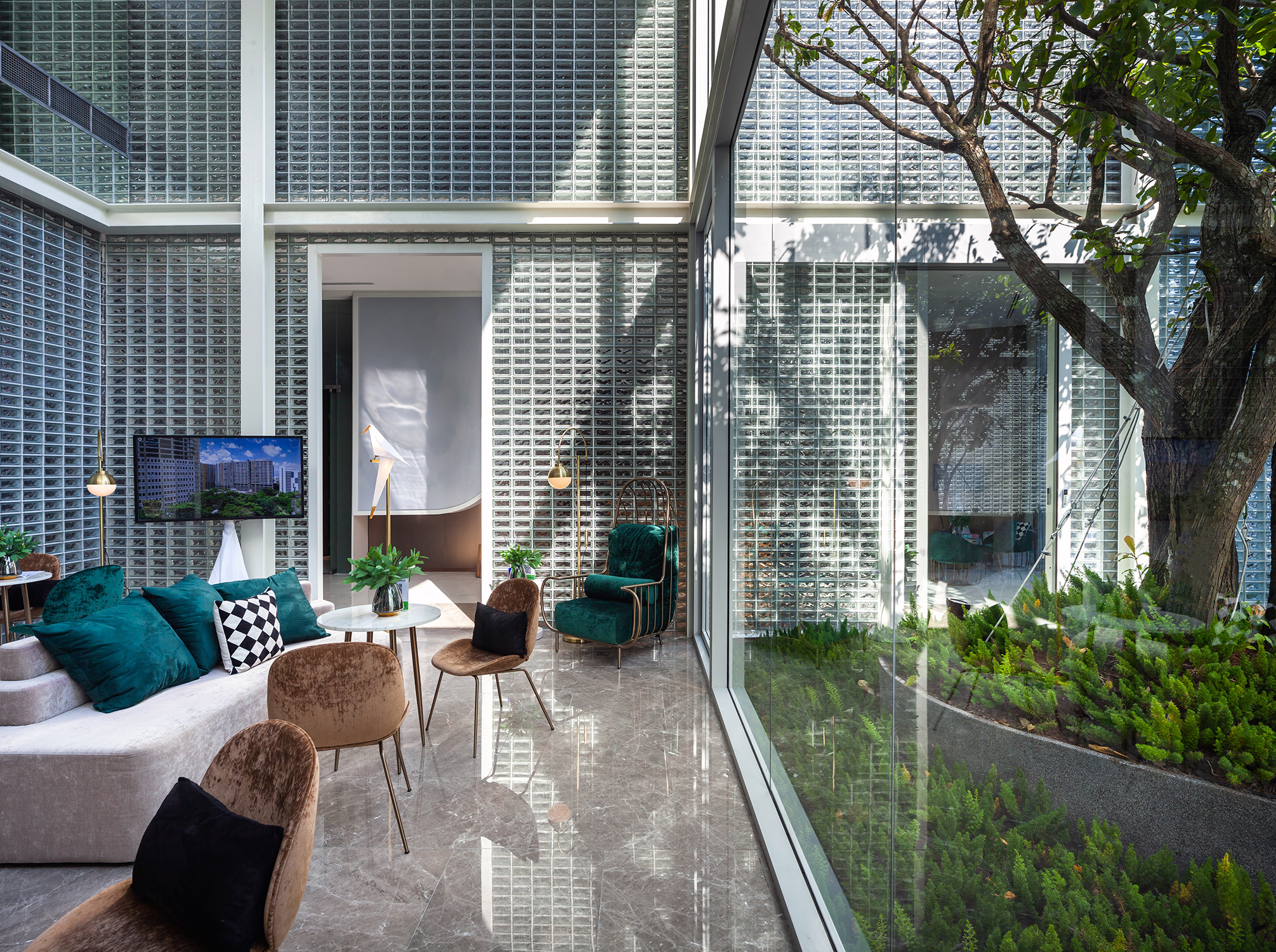 This sales gallery in Bangkok provides a retreat from urban noise and activity while promoting a condominium project. Built with approximately 20,000 custom rectangular glass blocks, the design encloses a hidden garden, balancing privacy with filtered natural light. The glass blocks’ extended edges reduce visible joints, creating a continuous glass-like surface and improving insulation to minimize heat and light transmission.
This sales gallery in Bangkok provides a retreat from urban noise and activity while promoting a condominium project. Built with approximately 20,000 custom rectangular glass blocks, the design encloses a hidden garden, balancing privacy with filtered natural light. The glass blocks’ extended edges reduce visible joints, creating a continuous glass-like surface and improving insulation to minimize heat and light transmission.
The 8-meter-tall glass walls bring light into the space while allowing for natural ventilation through openings at the base and top. A misting system helps regulate the temperature, ensuring a comfortable environment for visitors. By using glass for both functional and aesthetic purposes, the gallery establishes a unique architectural identity and creates a thoughtful space within the city’s dense urban fabric.
Where’s House Warehouse
By pbm, Thailand
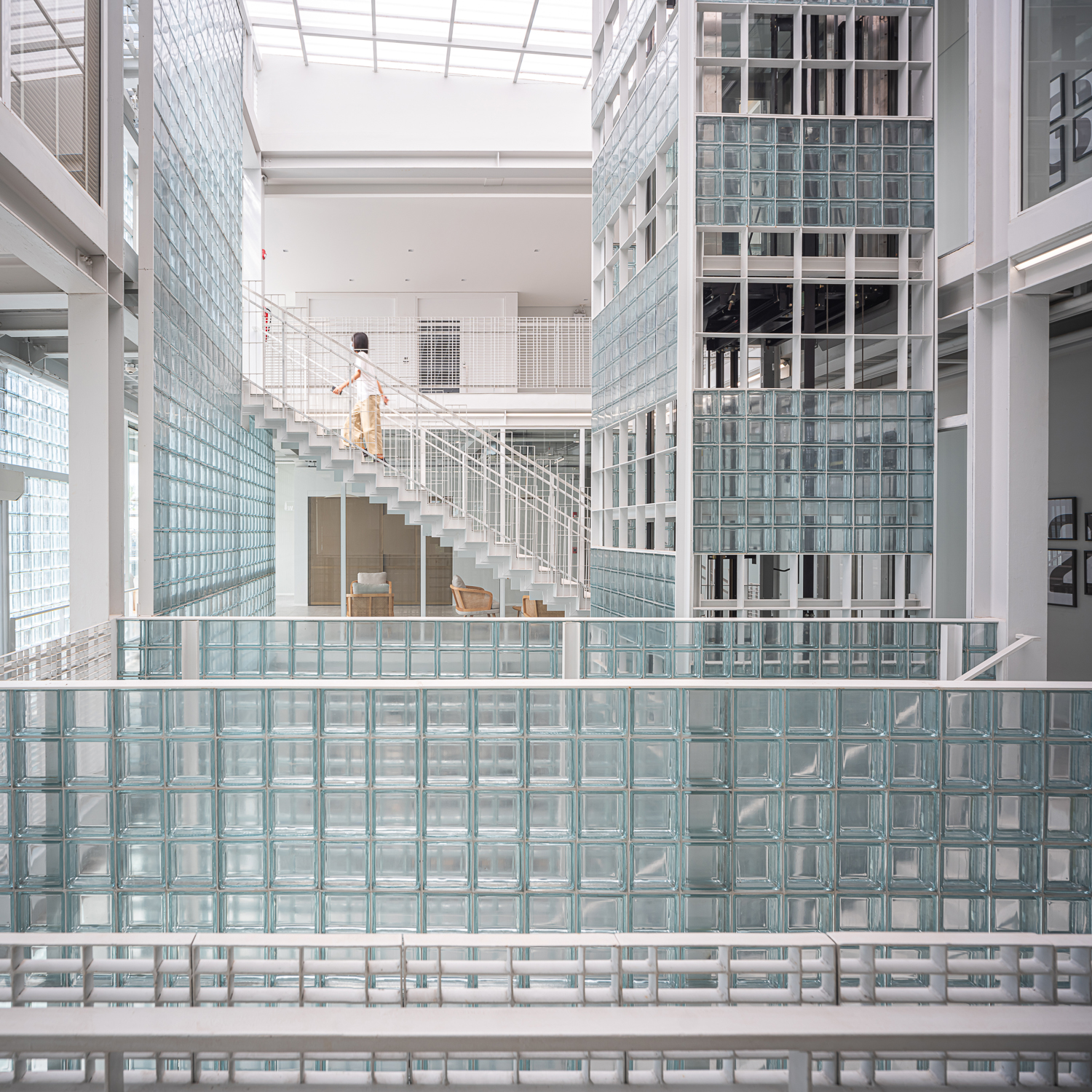
 Where’s House Warehouse redefines the relationship between living, working and storage within a single structure. Designed for a company specializing in vaccine and supplement distribution, the building integrates office and warehouse functions while maintaining a connection to its residential surroundings. The open-plan layout maximizes natural light and air circulation, reducing the reliance on air conditioning and creating a more sustainable environment.
Where’s House Warehouse redefines the relationship between living, working and storage within a single structure. Designed for a company specializing in vaccine and supplement distribution, the building integrates office and warehouse functions while maintaining a connection to its residential surroundings. The open-plan layout maximizes natural light and air circulation, reducing the reliance on air conditioning and creating a more sustainable environment.
A triple-volume central court serves as a semi-outdoor gathering space, featuring staircases, walkways and relaxation areas. Glass blocks play a central role in the design, reflecting the business’s focus on hygiene while allowing light to filter through and maintaining privacy. These translucent elements help soften the boundaries between internal and external spaces, creating a unified aesthetic that aligns with the village context. Where’s House Warehouse prioritizes functionality and well-being, offering a thoughtful approach to multi-purpose architecture.
Qaammat Pavilion
By Konstantin Arkitekter, Sarfannguit, Greenland
Popular Choice Winner, 10th Annual A+Awards, Cultural – Pavilions
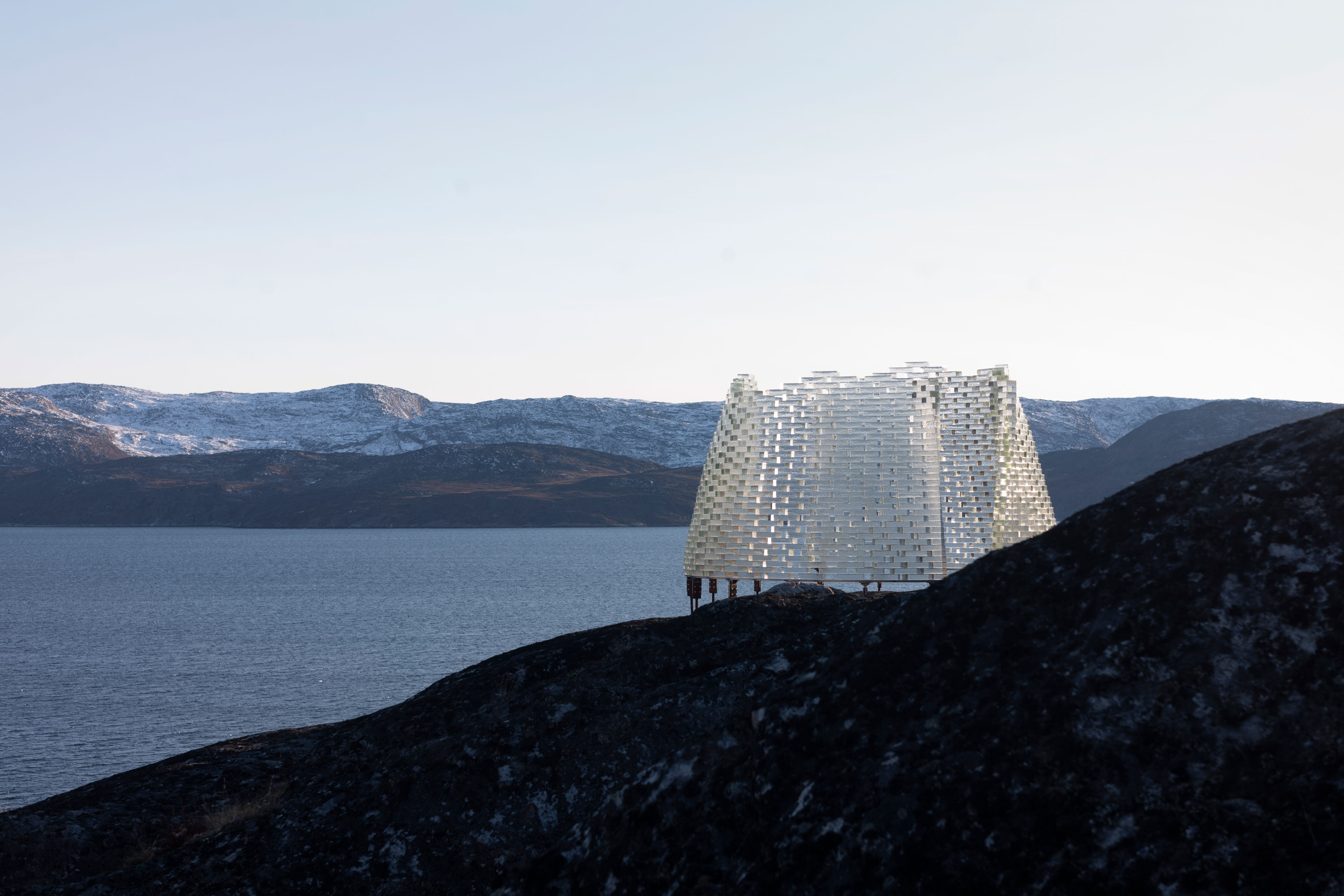
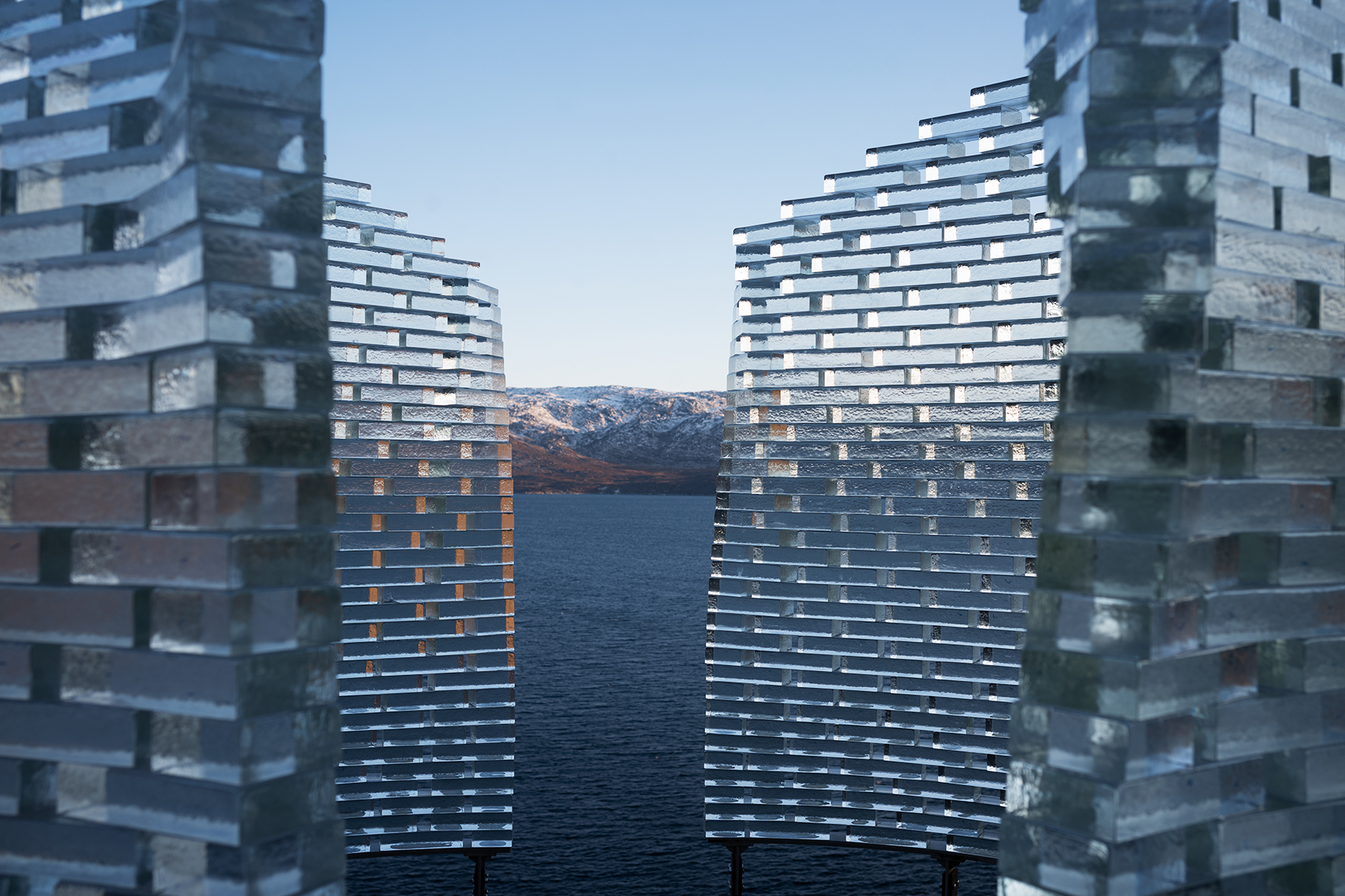 The Qammat Pavilion in Sarfannguit, Greenland, celebrates Inuit cultural heritage and the connection between the local community and its natural environment. Located at a UNESCO World Heritage site, the pavilion serves as a landmark and gathering point along a planned trail, offering panoramic views of the surrounding fjords and landscape. The site was chosen in collaboration with the local community to honor the spiritual and historical significance of the area.
The Qammat Pavilion in Sarfannguit, Greenland, celebrates Inuit cultural heritage and the connection between the local community and its natural environment. Located at a UNESCO World Heritage site, the pavilion serves as a landmark and gathering point along a planned trail, offering panoramic views of the surrounding fjords and landscape. The site was chosen in collaboration with the local community to honor the spiritual and historical significance of the area.
Anchored into the rocky terrain using rock anchors similar to traditional local construction methods, the pavilion’s curving walls are made of glass blocks. These blocks reflect and absorb the shifting light and colors of the seasons, creating an ethereal interplay with the landscape. Designed as a pathway open at both ends, the structure invites visitors to engage with the surroundings while the glass blocks’ transparency and reflective qualities create a sense of expanded space and connection to the environment.
Exhibition Center of Longquan National Archaeological Park of China
By OfficeOffCourse, Longquan, Lishui, China
Popular Choice Winner, 7th Annual A+Awards, Cultural – Gallery
Popular Choice Winner, 7th Annual A+Awards, Cultural – Architecture +Glass
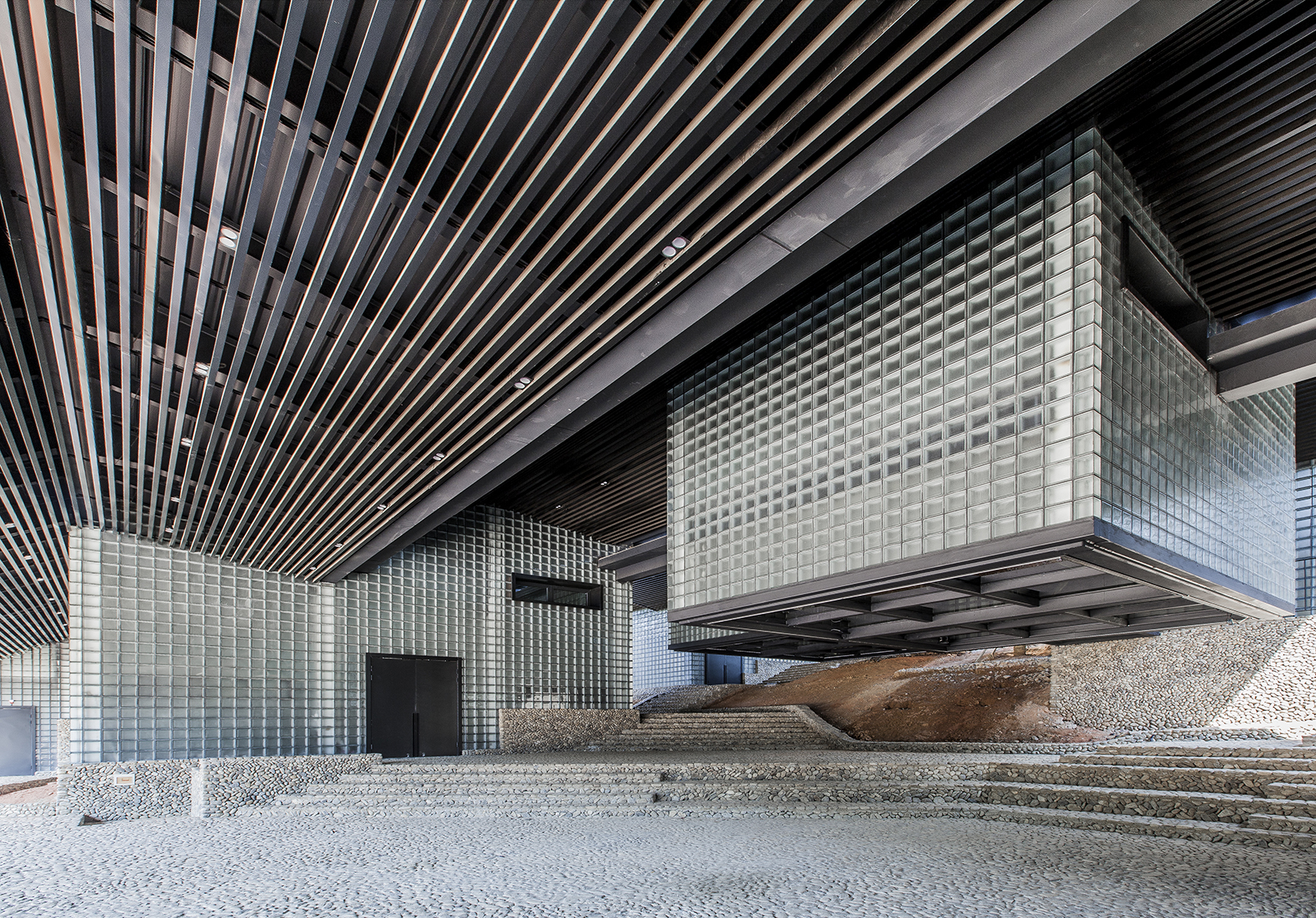
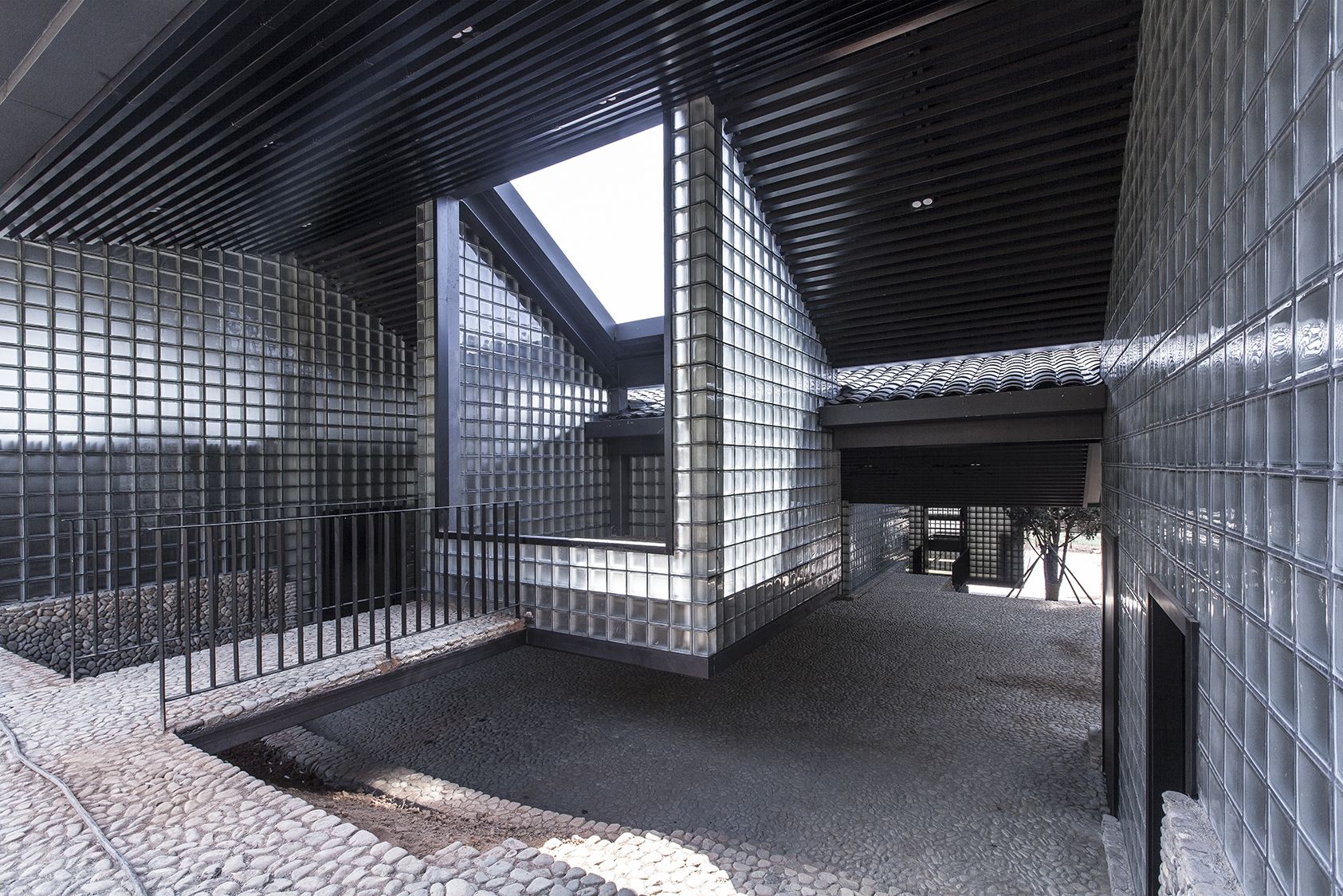 The Longquan Celadon Visitor Center serves as a gateway to the National Archaeological Park, preserving historical kiln sites in Dayao village. Designed to integrate with the natural terrain, the center’s structure is composed of separate rooms scattered across the hillside. This arrangement allows visitors to explore the spaces and landscapes in a free-flowing sequence, fostering a sense of discovery. The program includes exhibition galleries, a film display room, a waiting lounge and research offices, all linked by courtyards and pathways.
The Longquan Celadon Visitor Center serves as a gateway to the National Archaeological Park, preserving historical kiln sites in Dayao village. Designed to integrate with the natural terrain, the center’s structure is composed of separate rooms scattered across the hillside. This arrangement allows visitors to explore the spaces and landscapes in a free-flowing sequence, fostering a sense of discovery. The program includes exhibition galleries, a film display room, a waiting lounge and research offices, all linked by courtyards and pathways.
Glass bricks form the primary material for the walls, creating an atmosphere of subtle light and shadow that complements the exhibits. A double-layered brick system provides display shelter while maintaining the mysterious ambiance of the galleries. Glass floors in two elevated galleries allow visitors to view pottery ruins beneath, offering a unique connection between archaeological heritage and contemporary architecture.
Modern Pour-Over Tea
By `MOC DESIGN OFFICE, Wuhan, China
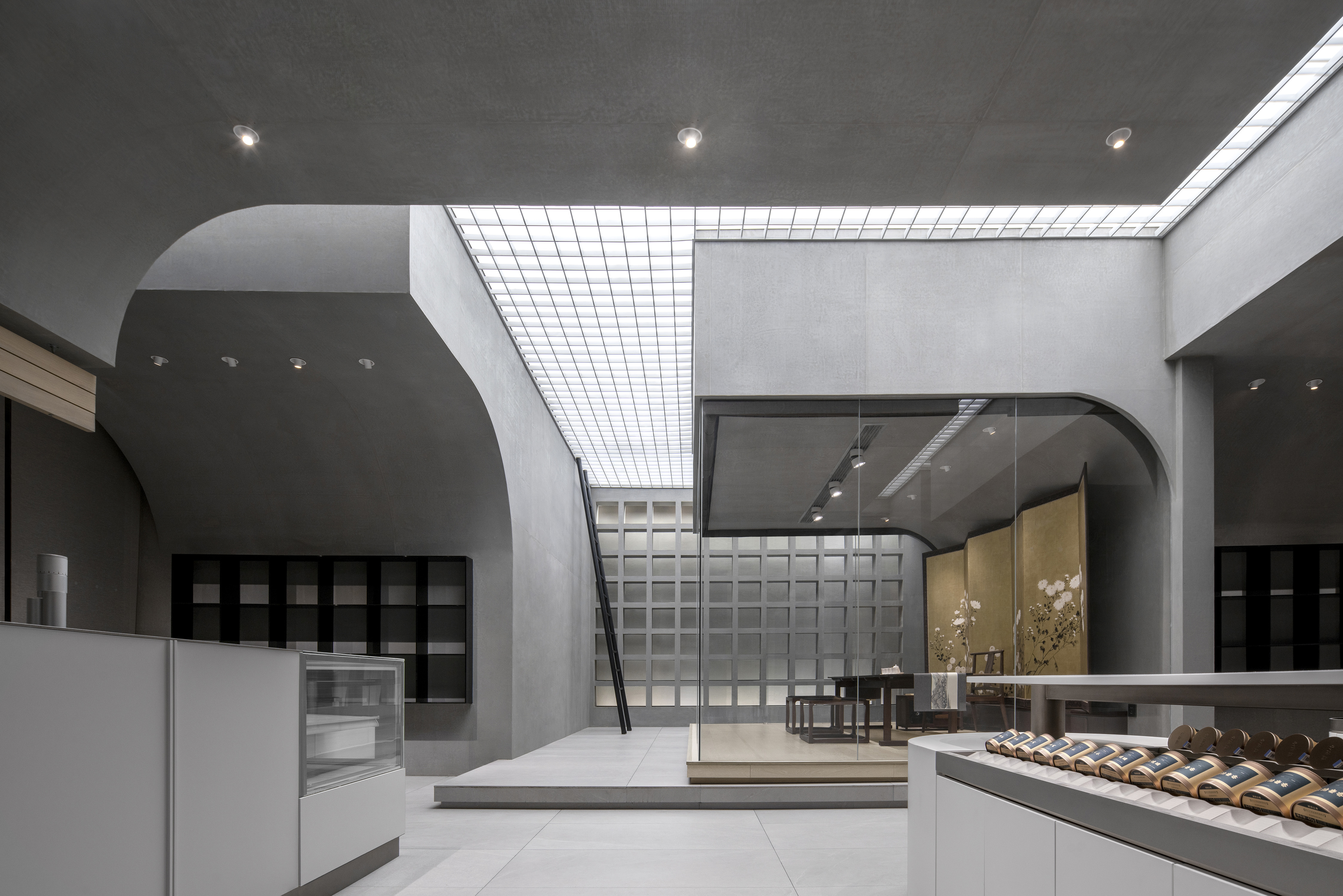
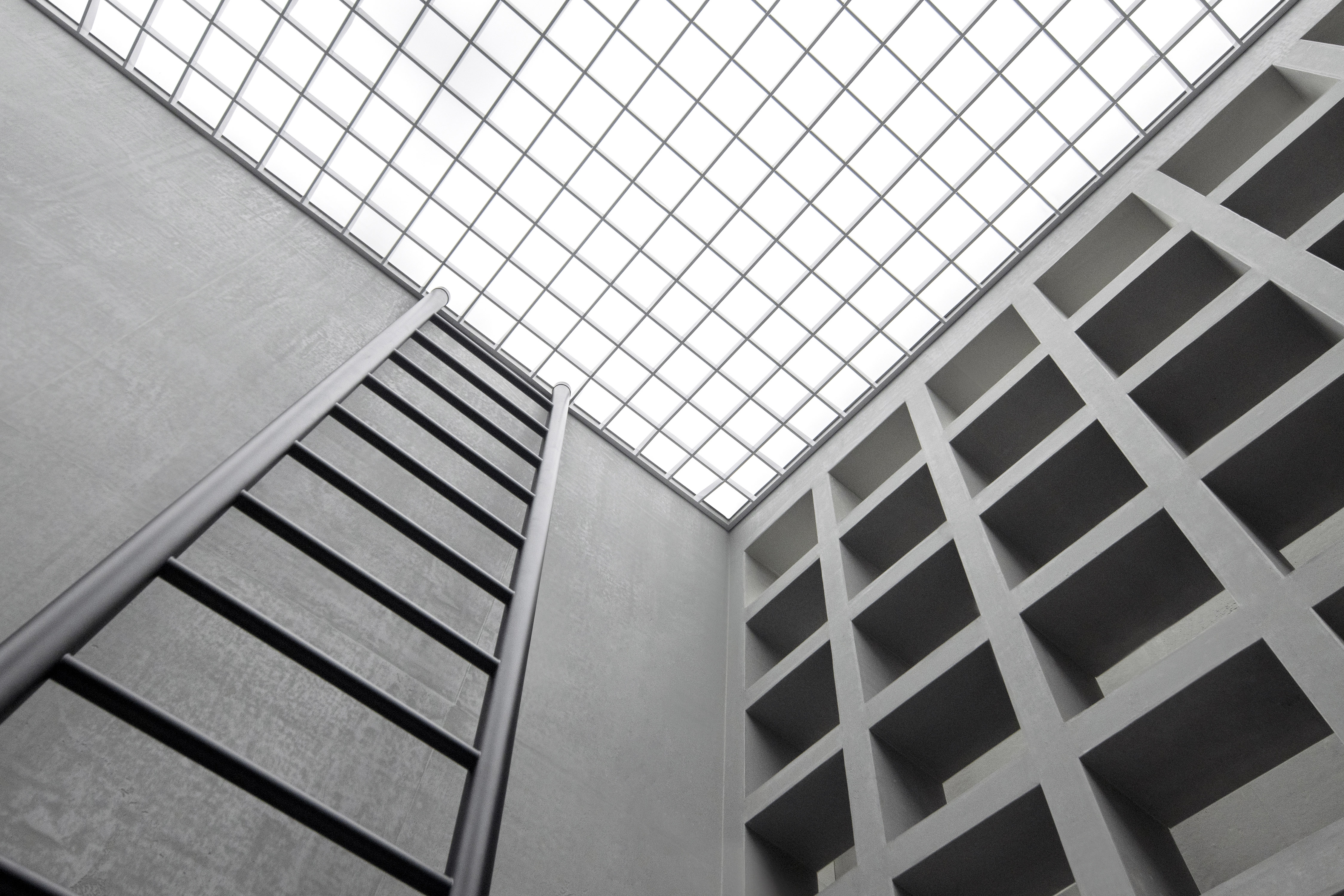 The Modern Pour-Over Tea space integrates glass as a central element to complement its minimalist aesthetic and enhance the tea experience. At its heart is a glass tea room, designed for traditional tea ceremonies, which introduces a sense of transparency and openness amidst the raw texture of fair-faced concrete. The glass walls of the tea room allow natural light to filter through, highlighting the intricate golden screen inside—a deliberate contrast to the minimalist surroundings that underscores the ritual’s importance.
The Modern Pour-Over Tea space integrates glass as a central element to complement its minimalist aesthetic and enhance the tea experience. At its heart is a glass tea room, designed for traditional tea ceremonies, which introduces a sense of transparency and openness amidst the raw texture of fair-faced concrete. The glass walls of the tea room allow natural light to filter through, highlighting the intricate golden screen inside—a deliberate contrast to the minimalist surroundings that underscores the ritual’s importance.
The glass elements connect different zones within the space, creating visual continuity while maintaining a sense of separation. This interplay of transparency and material solidity reflects the philosophy of whole-leaf tea: preserving its pure essence while offering a modern twist. Visitors at the minimalist bar can see into the tea room, creating a layered experience where the contemporary and the traditional coexist within the clean, architectural lines of the design.
Architects: Want to have your project featured? Showcase your work through Architizer and sign up for our inspirational newsletters.

